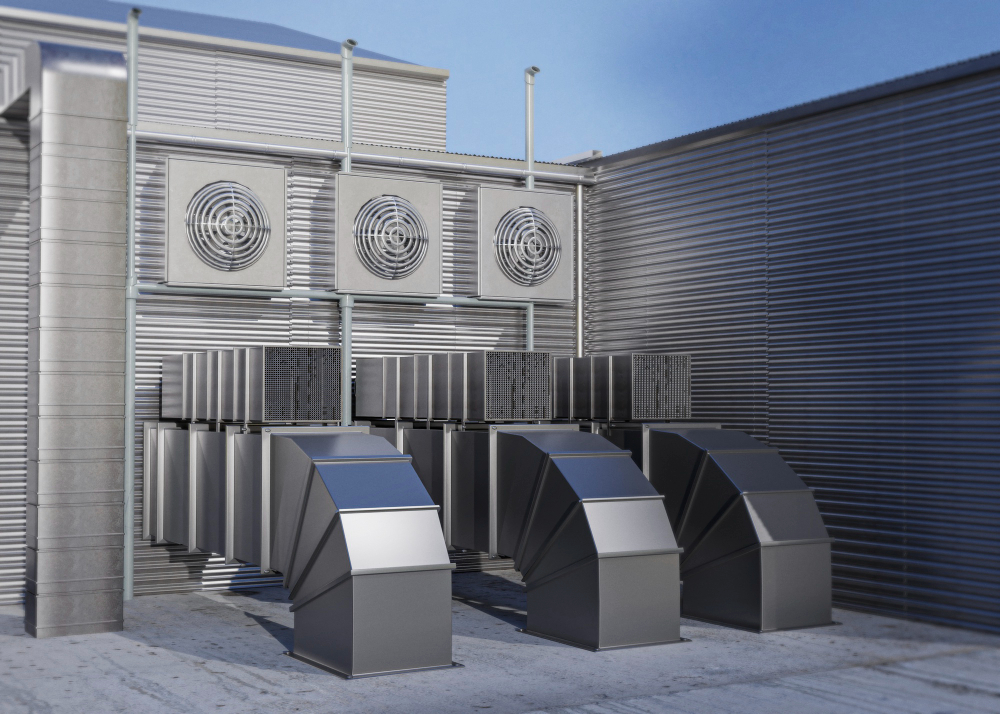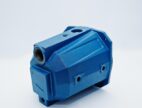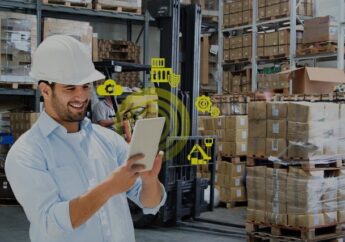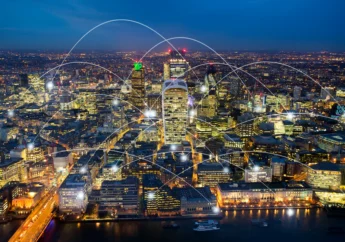The Impact of IoT on HVACR Systems
by Shahnawaz Alam Technology Published on: 05 February 2024 Last Updated on: 08 May 2025

In the rapidly evolving landscape of HVACR systems, the integration of Internet of Things (IoT) technology brings a transformative impact. The convergence of digital innovation with traditional systems has resulted in new dimensions of efficiency, control, and predictive maintenance.
As the demand for smarter, interconnected solutions intensifies, top 10 HVACR Distributors of 2023 in the USA find themselves at the forefront of this technological revolution. Today, we go into the profound impact of IoT on HVACR systems, exploring the numerous benefits and strategic opportunities that arise.
How Is IoT Used In HVACR?
It involves sensors and connectivity to optimize system performance. Smart thermostats, predictive maintenance, and remote monitoring enhance efficiency, comfort, and energy conservation in real-time. Here’s how:
1. Unlocking Operational Efficiency
Smart sensors embedded within HVACR equipment collect and transmit real-time data, enabling a more nuanced understanding of system performance. This data, often related to temperature, humidity, energy consumption, and equipment status, empowers professionals with precise insights into the system’s functioning.
By leveraging IoT-driven analytics, the system can adapt to dynamic environmental conditions. For instance, smart thermostats equipped with occupancy sensors can adjust temperature settings based on real-time occupancy, optimizing energy usage without compromising comfort. This not only reduces operational costs but also aligns with sustainable practices by minimizing unnecessary energy consumption.
2. Predictive Maintenance For System Reliability
Traditional maintenance models are reactive, addressing issues only after they arise. In contrast, IoT-equipped systems can predict potential malfunctions by continuously monitoring and analyzing data patterns.
Predictive maintenance minimizes downtime and extends the lifespan of HVACR equipment. Sensors can detect anomalies, wear and tear, or declining performance, promoting timely intervention before a major breakdown occurs. This proactive approach results in significant cost savings for end-users, as well as enhanced reliability and trust in the system.
3. Remote Monitoring And Management
IoT technology enables remote monitoring and management of HVACR systems, offering full control and accessibility. Professionals can remotely assess system performance, troubleshoot issues, and even perform diagnostics without physically being present at the site.
This capability is especially valuable for large-scale commercial and industrial applications where multiple units may be distributed across expansive facilities. Remote monitoring minimizes response times, reduces the need for on-site visits, and allows for swift decision-making, contributing to increased operational efficiency and customer satisfaction.
4. Energy Conservation And Sustainability
The integration of IoT aligns with global efforts towards energy conservation and sustainability. Smart systems can dynamically adjust energy usage based on real-time demand and environmental conditions. This adaptability optimizes energy efficiency and contributes to a reduced carbon footprint.
Moreover, IoT analytics provide valuable insights into energy consumption patterns, enabling users to identify areas for improvement and implement targeted conservation strategies. As businesses and consumers increasingly prioritize sustainable practices, the ability of IoT-equipped systems to contribute to environmental responsibility becomes a significant selling point for distributors.
5. Challenges And Considerations
While the benefits are substantial, challenges must be addressed as well. Security concerns surrounding the vast amounts of data generated by IoT devices necessitate robust cybersecurity measures. Distributors must prioritize secure data transmission and storage to protect against potential cyber threats.
Additionally, the proliferation of IoT devices may lead to interoperability issues if industry standards are not universally adopted. Compatibility between different manufacturers’ devices becomes crucial to ensure seamless integration and maximize the benefits of interconnected systems.
6. Future Trends And Opportunities
Looking ahead, the evolution of IoT in HVACR is expected to bring forth even more advanced capabilities. Machine learning algorithms, for instance, can enable systems to continuously adapt and optimize based on evolving usage patterns and environmental dynamics.
The rise of smart buildings further amplifies the role of IoT. Integrated systems that not only manage climate control but also interact with other components, such as lighting and security, are becoming increasingly prevalent. This holistic approach enhances overall efficiency and user experience.
What Are The Positive Impacts Of IOT On HVAC Systems?
There are several positive impacts of IOT on HVAC systems that you must know about at your end. Some of its key impacts are huge. You need to get through the facts to have a better idea of it. Let’s find out the key impacts of HVAC systems on it.
1. Energy Efficiency
IoT allows for real-time monitoring and control of HVAC systems, enabling them to adapt to changing conditions. Sensors and smart thermostats can collect data on occupancy, temperature, and environmental conditions, optimizing energy usage and reducing wastage. You must go through the facts that can assist you in reaching your requirements with complete ease. Try to make things work in the perfect order.
2. Remote Monitoring & Control
With IoT, HVAC systems can be monitored and controlled remotely through web-based platforms or mobile applications. Facility managers can adjust settings, troubleshoot issues, and schedule maintenance without being physically present, saving time and resources. The safety and security of the data will be intact with the application of IOT and integration with Remote monitoring systems.
3. Predictive Maintenance
IoT sensors can collect data on the performance of HVAC equipment, allowing for predictive maintenance. By analyzing trends and patterns, the system can identify potential issues before they escalate, minimizing downtime and reducing the likelihood of costly repairs.You can maintain things in perfect order while you want to reach your goals with complete ease and clarity.
4. Optimized Comfort
IoT-enabled HVAC systems can provide personalized comfort settings based on individual preferences and occupancy patterns. Smart thermostats can learn user behaviors and adjust settings accordingly, ensuring a comfortable environment while optimizing energy efficiency. You need to get through the complete process that can make situations easier for you.
5. Integration With Building Automation System
IoT facilitates seamless integration with broader building automation systems. This integration enables coordination between various building components, such as lighting, security, and HVAC, for improved overall building performance and energy efficiency. Follow the correct process that can make things lucid for in all possible ways.
6. Data Analytics & Insights
IoT generates vast amounts of data, and advanced analytics can be applied to derive valuable insights. By analyzing this data, building operators can make informed decisions, optimize system performance, and identify opportunities for further energy savings. Data analytics can help you get accurate insights into market trends. This will help you in reaching your goals with ease.
7. Reduced Environmental Impact
Improved energy efficiency and optimized operation contribute to a reduced carbon footprint. IoT-enabled HVAC systems can help organizations meet sustainability goals and adhere to environmental regulations by minimizing energy consumption and waste. Ensure that you keep the environment pollution-free with your process.
IoT integration with HVAC systems brings about numerous advantages, ranging from energy efficiency and cost savings to improved comfort and sustainability. The combination of energy efficiency, predictive maintenance, and optimized operation leads to overall cost savings for building owners. Reduced energy bills, lower maintenance costs, and increased equipment lifespan contribute to a positive return on investment.
Read More:



































































































